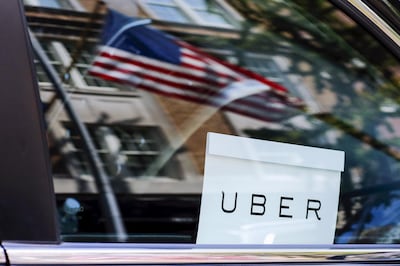“Have you ever borrowed a book from thousands of miles away?”
In 1993, Americans were treated to a series of outstanding TV and print advertisements from US telecommunications giant AT&T. In a series of moodily lit vignettes, viewers were presented with questions like the one above, followed with a confident, emphatic: "You will".
From GPS navigation to Salik-like contactless road tolls to video calls at bedtime, the ads projected an inevitable future; hardly exponential, but fulfilling the excited promise of what Al Gore called the "information superhighway".
These ads were an early echo of a quality the modern world has come to overvalue: certainty.
Ironclad predictions about tomorrow have been the currency of Silicon Valley and all its cultural kin for decades. The statements, like those we have heard from futurati past and present, such as Steve Jobs and Elon Musk, are future-shaping – laying out a narrative or roadmap of the imagination for society to follow. These forecasts provide a north star to aim for. In the UAE in particular, such strategic visions have been central to national growth and the development of new industries, supporting businesses large and small.
Herein lies the challenge. These visions can help entrepreneurs and leaders alike steer strongly towards a preferred destination without distraction, while also generating confidence in their viability. Yet, they can also obscure the type of peripheral vision that is needed to see threats and new opportunities that arise over time. Defining the probable – that which we believe will happen in the worldly sense – too strongly can lessen a sensitivity to the possible – that which might happen, based on what we know today. An overfocus on the probable (or what futurists call the "official future" - that is, the tomorrow we commonly agree on and take as guaranteed) can often shift resources away from sensing the emergent signals of risk and opportunity that tell us when to recalculate our course.
For small businesses in particular, the definition of entrepreneurship built on such linear focus on mission has become part of the cultural DNA of start-up life. Whole sectors are seeded around the idea that X future will happen. Financiers and potential partners favour small businesses that give off an air of certainty. This dynamic has bred a kind of me-tooism in start-ups that gives us a world of business model clones – such as, “it’s Uber-for-X".
In a more stable, clear environment, an adherence to linearity may work for a while, but in an uncertain landscape where many accepted factors have been swept aside, and new forces emerge at whiplash speed, a different approach is needed: one where uncertainty is seen not as negative, but as possibility, or opportunity space.

Rather than punishing the lack of hard data about the future, or dismissing fuzzy insights as dubious and only clinging to what is quantifiable or deemed “accurate", the need has never been greater for entrepreneurs (in both small businesses and major enterprises) to explore the counterfactual, dive into white space, and question the historically accepted “future". This is more easily said than done, however. Making this kind of shift requires three important ingredients: a different risk culture, broadly accepted models of exploration, and better “sensing” of emerging signals.
Culture is the place to start, not end. Working comfortably with uncertainty is particularly tough in environments that reward provable metrics, and rely only on key performance indicators, or KPIs. These environments seek to reduce risk to a footnote or line-item in a ledger, and reward accordingly. I have been approached many times by professionals in workshops who understand and embrace new ways of exploring future opportunities, but fear that their managers, or their managers’ managers, will reject these practices as inconclusive or not fully evidenced-based, and therefore wasteful or wrong. For meaningful experimentation to take place, people need to sense they have the breathing space to do so, whether from organisational management, funding bodies, or partners. The expectations are set from the top.
Having common language for exploration is vital when working in less well-defined territory. Even if an emerging signal of opportunity or risk cannot be measured or priced yet, being able to communicate whether something is a new business model, or a rapidly shifting consumer behaviour, or a new piece of technology, is important. Similarly, establishing definitions for concepts that are easy to throw around, but hard to pin down, like “trend” or “scenario", can build confidence in more open discovery.
Finally, having a good radar is critical to small enterprises looking for new spaces to grow. This does not just mean having a nose for business opportunities, but a capacity to sense change in the wind, whether that is an emergent but vague risk (such as, say, a flu-like illness in a large city half a world away), or a subtle change in the competitive landscape that might be a large window of opportunity soon. Even as an organisation is “laser-focused” on the strategic goal, it still must be able to see when the terrain is shifting, even if that change seems small.
Today, everyone has to squeeze more out of less, and do so in a turbulent environment. This means using uncertainty as a creative material, looking into the hidden or obscured areas of possibility, and building or re-visiting the capacity to landscape ahead. Real future-shaping is taking the little-known, perhaps low-probability trends and exploring them to find hidden pathways, by seeding intellectual resources, encouraging our inherent future curiosity, and cultivating a more risk-friendly culture.
Scott Smith is managing partner of Changeist, a future foresight consultancy, and, with Madeline Ashby, author of the upcoming book How to Future: Leading and Sense-making in an Age of Hyperchange






